Life After Death – Commissioned Art
This week, I have a commissioned art piece to show you. I have fewer words than I normally do – not only because the project is confidential, but also because this project went beyond words in many ways.

Last fall, I got a commission for this oil painting. It was ordered by a man in memory of his recently deceased spouse. We brought elements of the wife’s life and references to what she liked into the painting. The painting is, therefore, a secret portrait, from which loved ones recognize familiar things, but which do not need to be explained to strangers, unless they want to.
Commissioned Art – Sketch First
I started with a digital sketch. Here you can see the sketch and the final painting side by side.

I painted the sketch freely in the ProCreate app. The sketch is more abstract than the finished work and is more about the impression than the details.
Painting Process
After the sketch was approved, I ordered the canvas. The size of this piece is 50 x 40 cm (about 19.5 x 15.5 inches). Here are the first blurry layers.

I worked several sessions and let the painting dry for 1-2 weeks between the sessions.

The sketch helped with the painting process so that I could save my energy on the details.
Final Treatments
When the painting was finished, I photographed it outdoors. The natural light is wonderful now when Finland has a lot of snow, but the shoot had to be done quickly.

I varnished the painting with Gamvar after the photoshoot.

I like to think that varnishing was like giving a special blessing to the painting.
Spiritual Meaning
This project made my work as an artist feel even more meaningful than before. I learned more about what kind of artist I am.

I thought: “What could be a better assignment than building a bridge between life and death?”
What do you think?
Art-Making and Garden Life
This week, I talk about how gardening inspires both my husband and me. The garden is present in these two new miniature paintings as well.
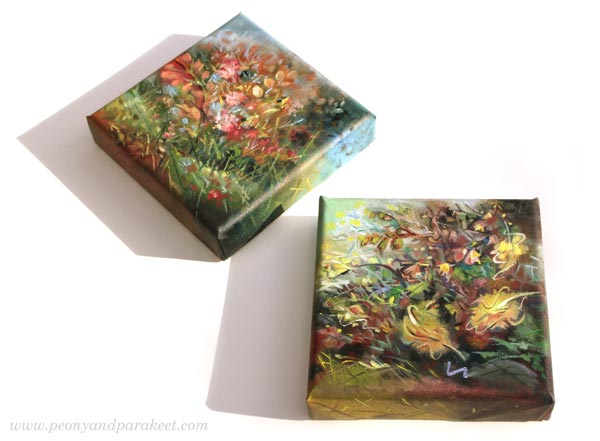
It is already autumn in Finland, but we have summer in our hearts because we have done a lot of work in the garden during the summer. My husband has put all his energy there, I don’t have quite as big a passion. The garden is his canvas, but for me, painting is the most important.
Freely Grown – and a New Sweet Spot
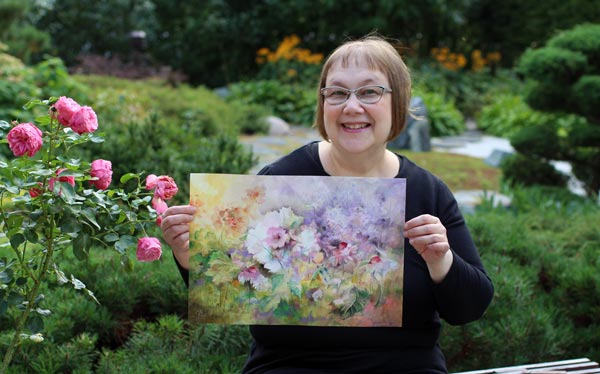
I have a new course in the making called Freely Grown, which I hope to run in late October and get for pre-sale next week. There we will paint layered flowers in watercolor and finish the painting with colored pencils.
Lately, I’ve found my sweet spot in the way I look at plants. I can see both playfulness and soulfulness in them. This perspective has brought new positivity to my life. I think that art always has a lot of possibilities. Making art is like walking down a long corridor full of doors. Now I have found a door where I can be funny and profound at the same time. This insight also affects the creation of the course. I’ve had a lot of fun, although I haven’t compromised on explaining the details.
Making a Dream Come True
The garden is my husband’s canvas. He’s been making a bigger water feature all summer. It’s big enough to be called a pond. I wasn’t terribly excited about it, but the further the project has progressed, the more I understand his vision.

One of the hardest things both in art-making and garden life is visioning – so, dreaming! The dream must be simplified so that it can be remembered during the making. All projects have ugly phases. The dream must still be maintained.
Even these miniature paintings, for which I use leftover paints from the palette, looked pretty terrible at first.
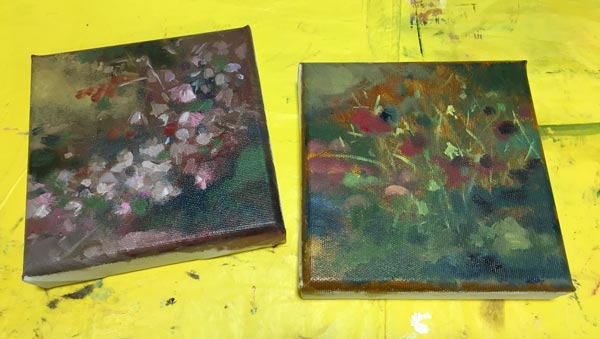
However, I had a dream and knew these would become really nice.
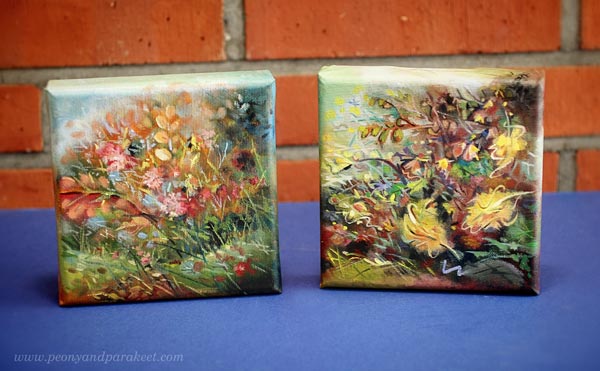
I also made small paintings like this earlier this year, remember?
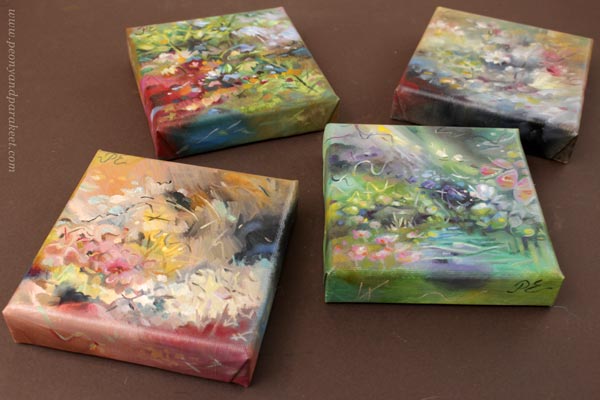
See this blog post for more pics!
Planning a Garden
In the spring, we hired a professional garden planner to draw a plan for a part of our backyard.
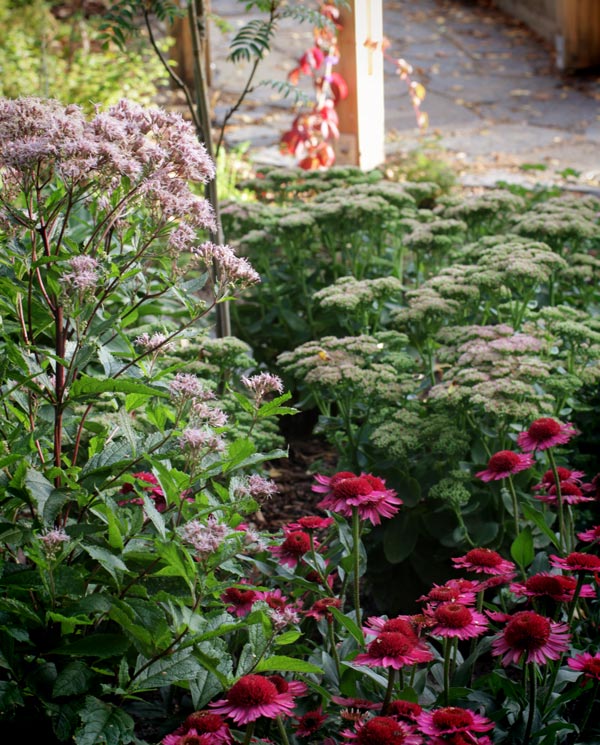
It was a bit like taking a course. We got points of view from a professional and she helped us to see further in our dreams. With that, I learned a lot about plants and how to plan a garden like dividing a house into rooms. It is not very far from a painting.
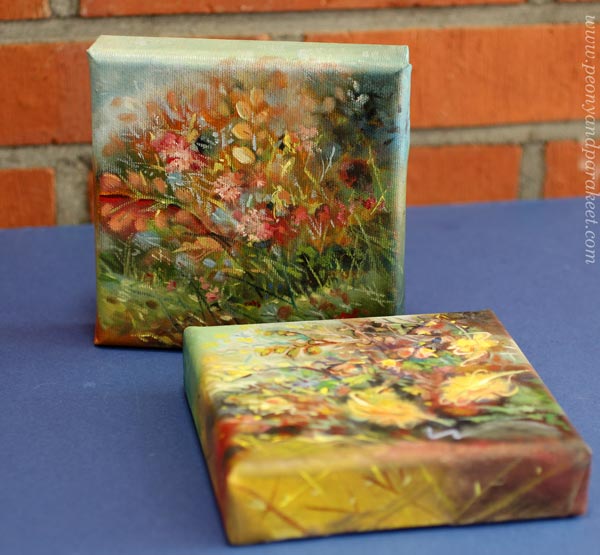
Think about a painting as a place that has its own identity. My small paintings are like tiny closets but bigger ones often like halls.
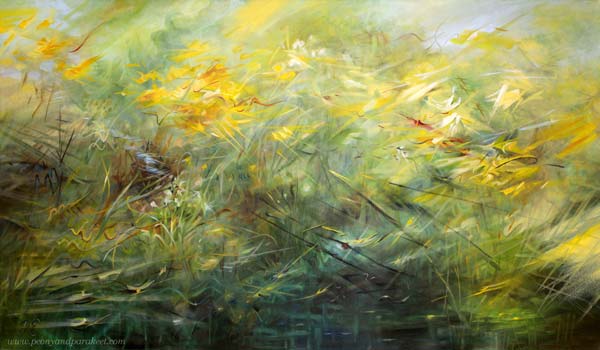
See more pics about this big painting in this blog post!
Art-Making and Garden – Back to the Pond
The pond is entirely my husband’s work – although he has probably watched all the pond-building videos on YouTube!
I feel that the pond already affects my paintings. Do you remember this watercolor painting I presented a couple of weeks ago?

See this blog post for more pics!
I think I already have a little love for that pond, its plants, its reflections, and how it reminds me of Monet’s garden.
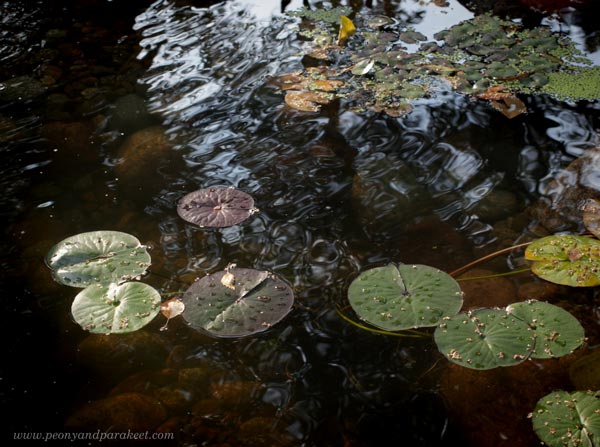
However, winter is already coming. Art-making and garden life will be a bit more separate then. But the flowers will bloom on the canvas. And my husband will start watching YouTube again to see what he could create next summer.

Can you relate? Do you have a garden?
Restarting a Painting
This week, we talk about restarting an old painting or restarting creating so that we have a new confidence and freedom.
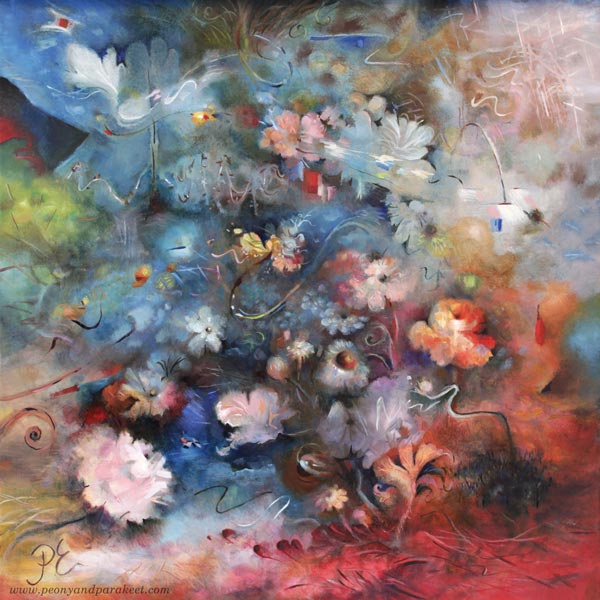
This piece called “For Liberty” was been painted on the top of an old work. It was a bit challenging to photograph because it’s painted on wooden paint board – a very smooth surface that reflects light. But before I go into more detail, I want to tell a story from my childhood that has had a big impact on me. If you have taken my classes, you might recognize my passion for acting!
“Open Your Arms”
I have been an enthusiastic actor as a teenager. Once I was the lead in a school play directed by the teacher. He was a very good director. “Spread your arms,” he told me when we were practicing a scene. For a teen, spreading the arms was a huge gesture. I still remember how my hands reluctantly opened and released from the grip. But wide open, I suddenly had a sweet sense of confidence: I owned this arena and I was going to get an audience too. Everything will be fine and even better than before!
My friend and I had been chosen to the school play because we had a private play club that we had put together. I wrote the script for the plays and we performed them to our class. It was great that our native language teacher allowed the performances. The teacher Varpu Lehtolainen and the teacher who directed the play, Taavi Lehtolainen, were married. Their creativity was inspiring. Their daughter is Leena Lehtolainen, who later became a famous author in Finland – no wonder!
Confidence for a Restart
When a person makes another person free, the feeling that he ignites is not based on successful performances in the past. The new self-confidence comes from seeing what will be possible in the future. You can go back and start over as many times as you want. Everything will be fine.
In 2020, I made an oil painting called “Wreath Maker.” However, I failed in varnishing and did not put it on display or for sale. The painting is painted on a board instead of a canvas, and it is quite challenging as a surface.
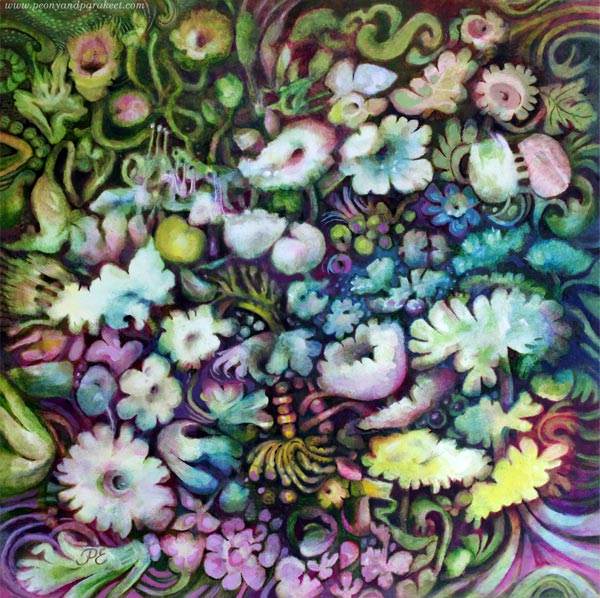
When the local artists’ association asked for works with the theme “Red, White, Blue”, I came up with the idea of sanding off the varnish and doing a new painting on top, somewhat based on the old one.
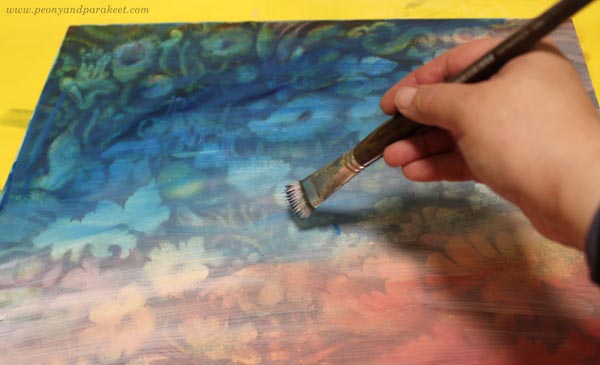
As soon as I started painting, there was this “spread your hands” feeling. I wanted to free the painting from its constraints and give the flowers their own roles.
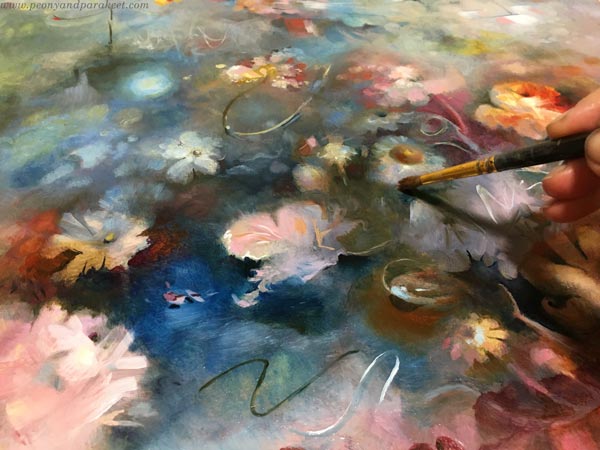
Rubens’ paintings of battle scenes from the 17th century came to mind, and I wanted to make a grand theme too – where people wake up to defend their own values and the flags are flying high.
Restarting to Release the Visual Voice
I have painted this in parts and between the sessions, I have been building a new course, where freedom is also a central subject. I wish I could be a teacher like Taavi Lehtolainen: “Spread your hands, control your space!”

Art always does well when the flowers are allowed to grow freely and each in its own way.
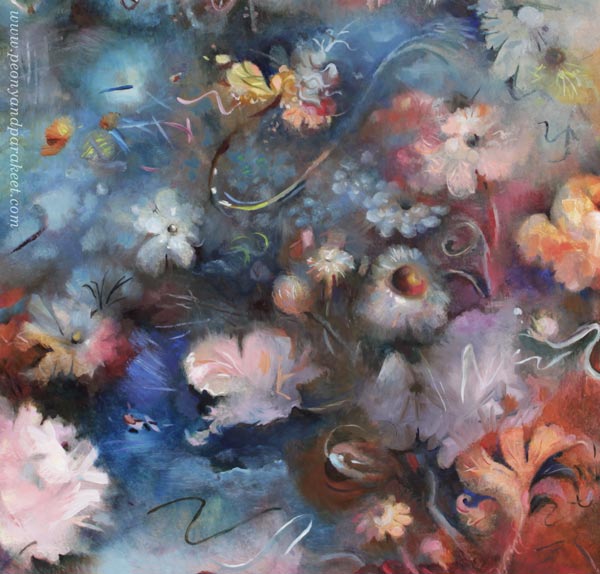
A painting is released when it finds its meaning. I feel that’s what happened to this piece. The previous version was okay, but the message is now clearer, the painting is more airy, and the flowers are now more diverse and expressive.
When you want to fine-tune your visual voice, maybe this kind of freedom is what your art is lacking?
What do you think?
Start with Something – Following Picasso and Edelfelt
This week, we are using inspirational art as fuel for our own art. I show how I created my own version of Albert Edelfelt’s masterpiece by following the advice given by Pablo Picasso.
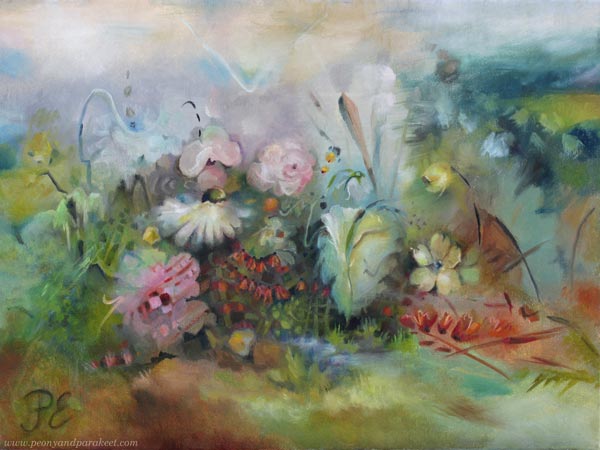
“Friends by Fate” is a small painting, but one of my favorites from the series that I made for the current exhibition. Because the title of the exhibition is Taiteilijat Edelfeltin tunnelmissa – Artists in the Mood of Edelfelt, I wanted to make my versions of some of Albert Edelfelt’s (1854-1905) artworks. For example, I made this one, and this one. “Friends by Fate” uses Albert Edelfelt’s painting “Women of Ruokolahti on the Church Hill” as inspiration.
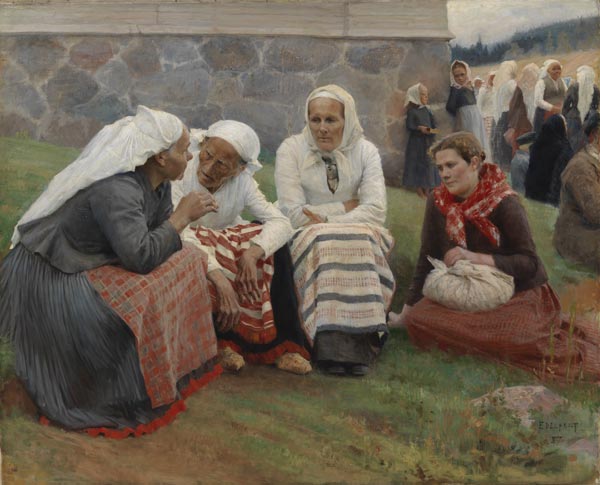
This is a very famous painting in Finland. Even if Albert Edelfelt painted a lot of portraits of wealthy people to finance his profession, he became known for pieces like this that depict ordinary folk.
Start with Something!
I have always been intrigued by this Pablo Picasso’s (1881-1973) quote:
“There is no abstract art. You must always start with something. Afterward, you can remove all traces of reality.”
In my opinion, this applies to any art, not just abstract. You can always start with something and then make your own version.
For example, even if there are people in Albert Edelfelt’s painting, it doesn’t mean that my version has to have them.
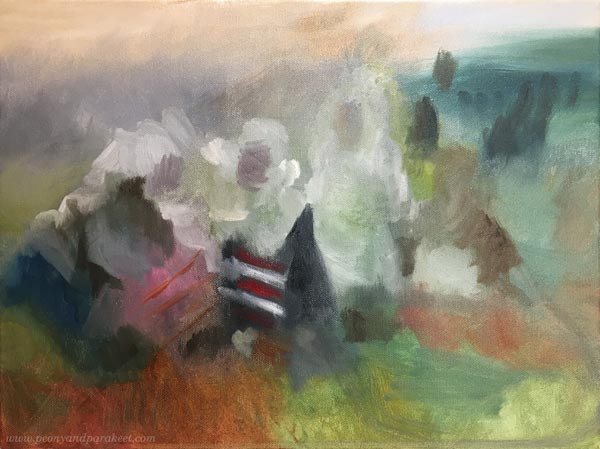
Start the painting with a similar composition, but then slowly let it grow in its own direction.
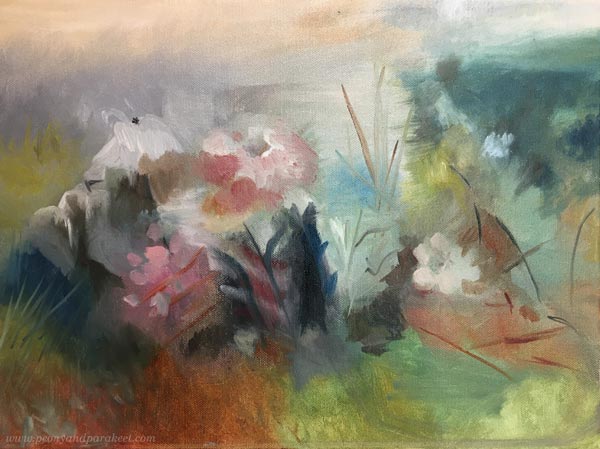
In my version, the flowers and plants replace the women, and the location is different too. I was thinking about the area where I live and how people gather together on a summer evening.

There was quite a lot of work in the details. Albert’s work is not clumsy, so I wanted mine to be well-finished too.
Following Picasso and Edelfelt
I love to paint so that flowers and plants are the characters of the painting. I feel I can combine my sense of humor with my yearning for beauty.
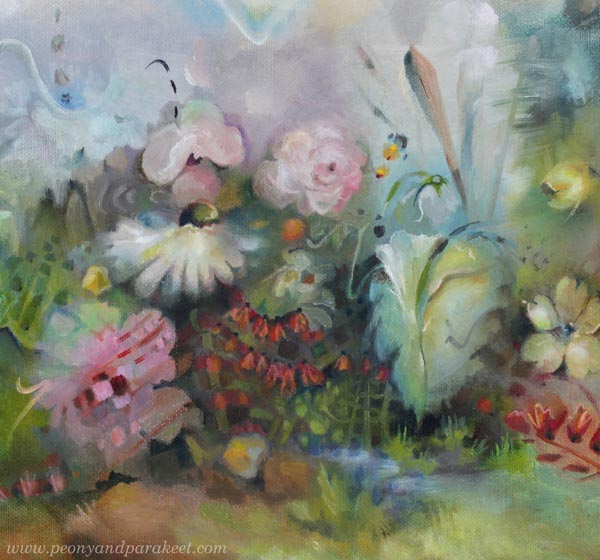
Flowers have given me a secret language that I can use to express anything. With this realization, I feel more and more drawn to the boldness of Pablo Picasso, the re-creator of Diego Velázquez’s 1656 masterpiece “Las Meninas”.
Others have seen what is and asked why. I have seen what could be and asked why not.
Albert Edelfelt was also appreciated in his lifetime, but he didn’t have the confidence that Picasso had. He wrote to his mother:
” I fear nothing else than that I become a raté – a half-talent and an unhappy person.”
(Free translation from Finnish)
This kind of seriousness is what I recognize too: puolilahjakkuus – half-talent – who would like to be that! But still – or maybe because of that, it’s good to embrace playfulness when creating art.

Like Edelfelt, you can recognize the fears and set the bar high.
But then, act like Picasso – Start with something and then ask: what could be and why not!